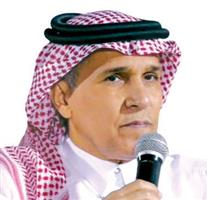How significant is the reported recapture of the first Ukrainian villages from Russia?


Ukraine has celebrated the first territorial gains of its long-trailed counteroffensive against the invading Russian forces.
Unverified photographs and video appearing on Sunday and on Monday morning showed Ukrainian soldiers holding their country’s blue and yellow flag aloft in triumph in the eastern villages of Storozheve, Blahodatne, Neskuchne and Makarivka in Donetsk, suggesting they had been recaptured from occupying enemy troops.
Ukraine’s deputy defence minister Hanna Maliar posted one of the photos from Storozheve and thanked the 35th Separate Brigade of Marines for liberating it.
Kyiv has imposed a strict silence on its armed forces to avoid compromising an operation it hopes will retake swathes of land in the east and south of the country and eventually threaten the land bridge Russia has established for use in supplying the occupied Crimean peninsula.
The advance represented by the retaking of the four villages, if confirmed, would amount to only modest gains in territorial terms, given that Makarivka is around 3 miles short of the frontline and 56 miles from the southern rim of the aforementioned bridge over the Sea of Azov.
But the symbolic value of Ukraine’s most rapid progression forward for seven months, after an arduous winter, is obvious, a timely boost to national morale for a beleaguered nation who just a week ago suffered a major setback when the Nova Kakhovka Dam collapsed, allegedly after being mined by Russian soldiers, flooding neighbouring towns for miles around and leaving the region’s farmland swamped, its crops ruined and livestock drowned.
As the counteroffensive continues, Ukraine is banking on the huge amount of weaponry, training and intelligence it has received from the West, combined with its own battlefield resolve, tactical nous and the motivation of driving an invader from its own land, to give it the edge in the conflict.
The country also knows it may have to show significant progress over the summer to ensure its international allies demonstrate the same level of commitment in future.
Ukraine’s armed forces general staff said its soldiers had engaged in two dozen heavy battles in the previous 24 hours on the eastern front, near the ruined town of Bakhmut, further south near Avdiivka and Maryinka and further north near Bilohorivka.
Moscow has yet to officially acknowledge any Ukrainian advances, saying last week that it had repelled numerous attacks and inflicted heavy casualties on opposition forces. Unverified footage circulated on social media by pro-Russia accounts showed destroyed American and German armoured vehicles.
It is unquestionably too early to draw conclusions about the fate of the counteroffensive from these early skirmishes, which may be more about testing Russian defences than staking out major land gains.
(DataWrapper/The Independent)
The US-based Institute for the Study of War said Ukraine was attempting “an extraordinarily difficult tactical operation, a frontal assault against prepared defensive positions, further complicated by a lack of air superiority and these initial assaults should not be extrapolated to predict all Ukrainian operations”.
Ben Hodges, a former commander of US forces in Europe, told the Center for European Policy Analysis that the main attack, when it came, would be expected to feature several hundred tanks and infantry fighting vehicles.
“The offensive has clearly started, but not I think the main attack,” he said.
“When we see large, armoured formations join the assault, then I think we’ll know the main attack has really begun.”
Additional reporting by agencies
xnxx,
xvideos,
porn,
porn,
xnxx,
Phim sex,
mp3 download,
sex 4K,
Straka Pga,
gay teen porn,
Hentai haven,
free Hentai,
xnxx,
xvideos,
porn,
porn,
xnxx,
Phim sex,
mp3 download,
sex 4K,
Straka Pga,
gay teen porn,
Hentai haven,
free Hentai,




